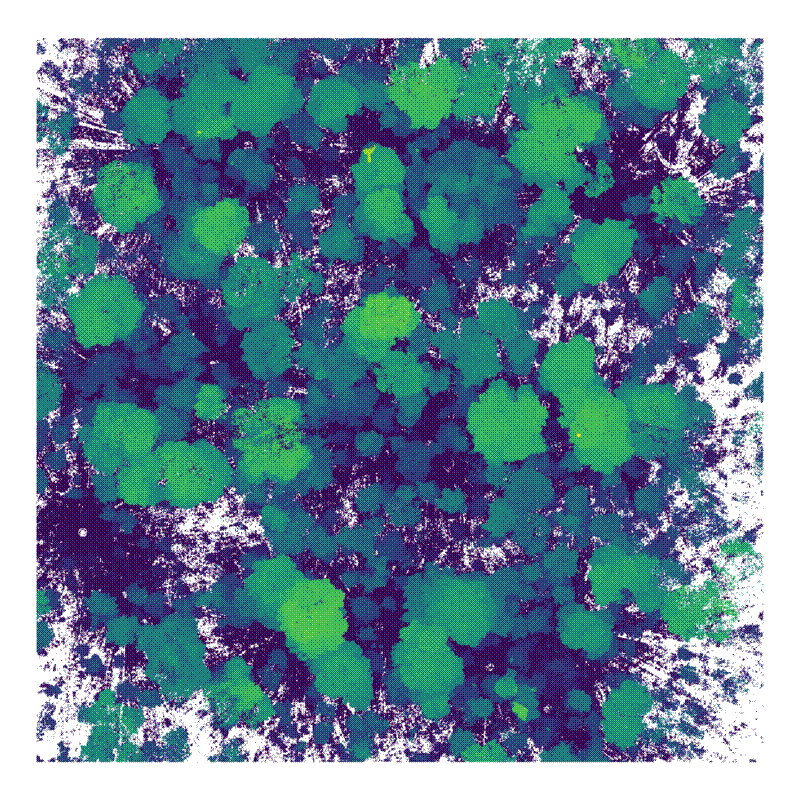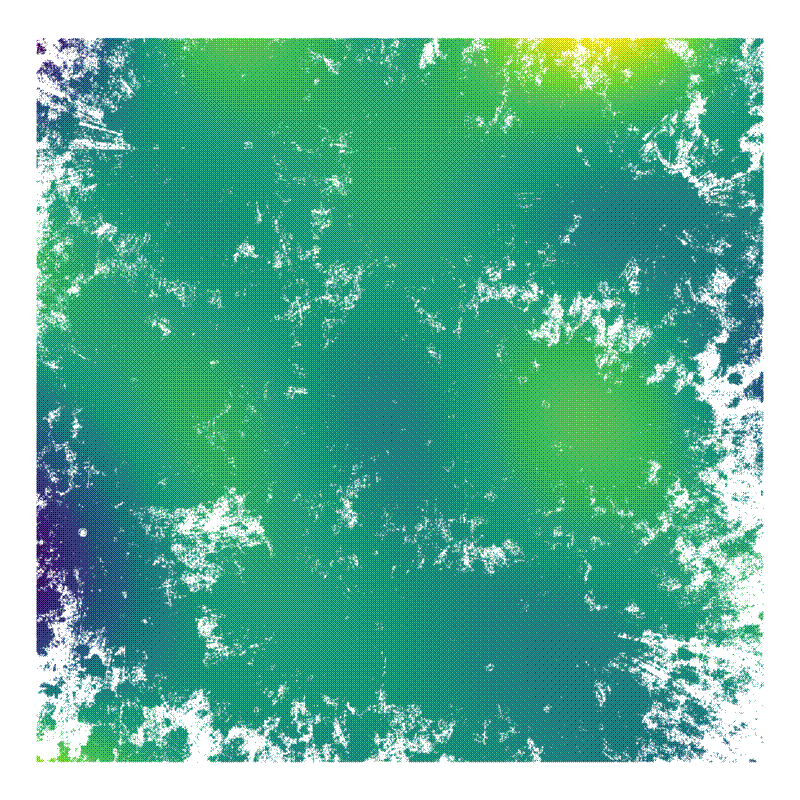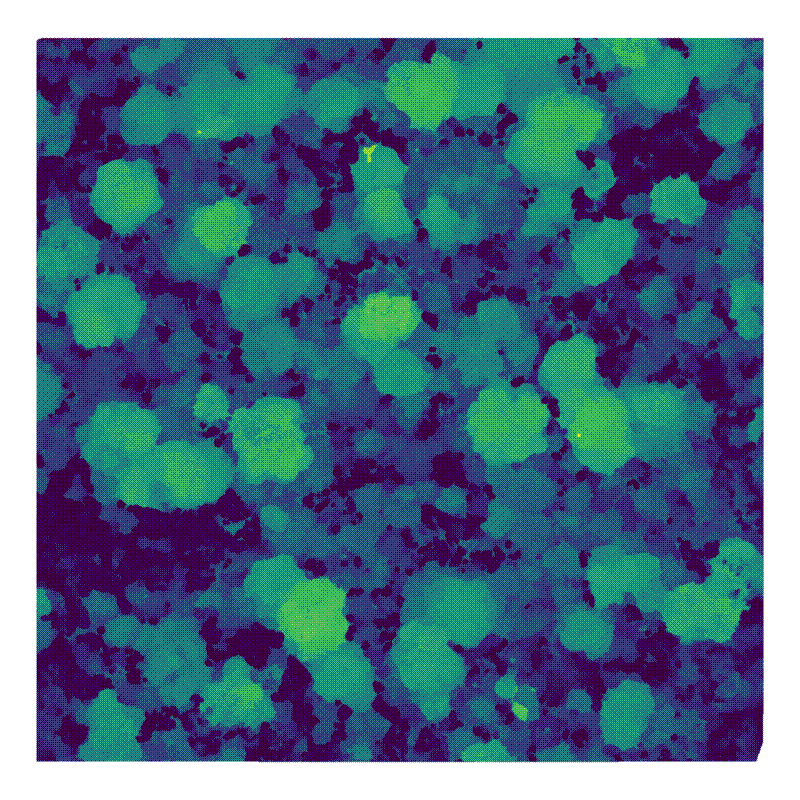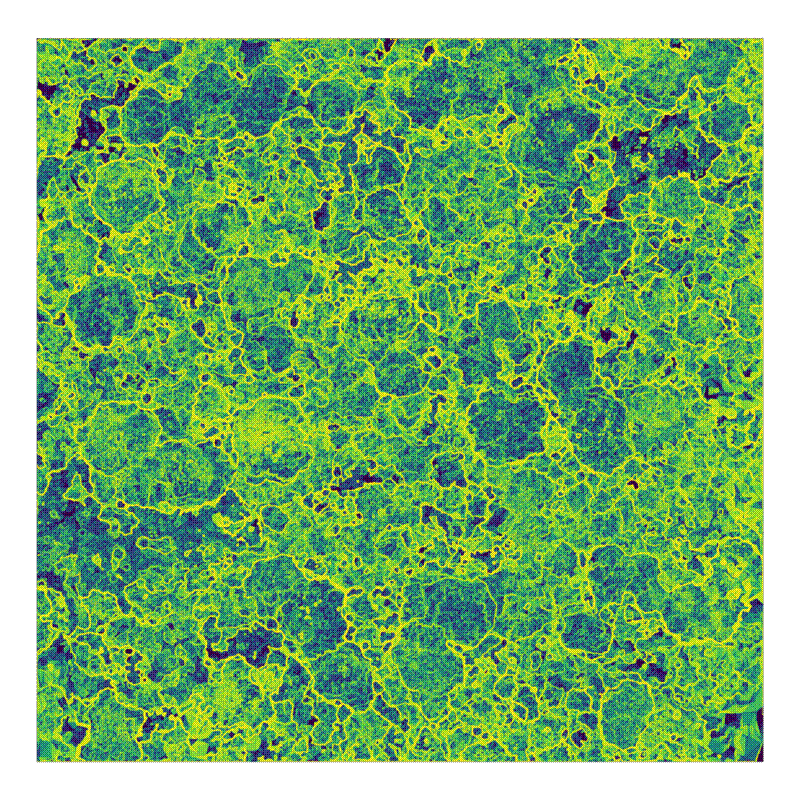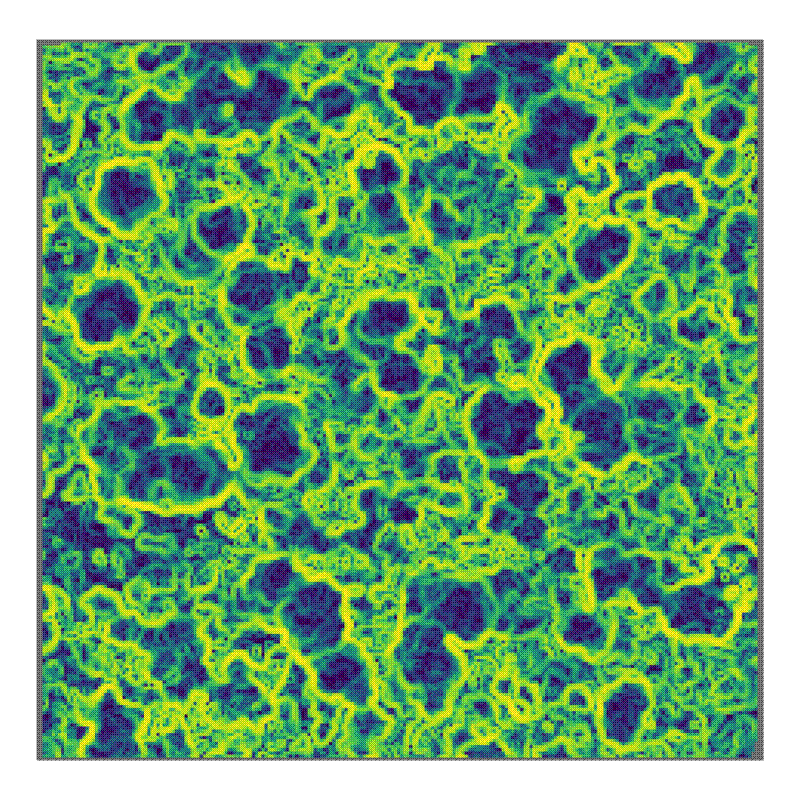I’ve been trying to extract tree canopy complexity statistics from my terrestrial LiDAR data. As part of this I have been creating Canopy Height Models (CHMs) for each of my savanna plots. This involves “pit-filling” to remove low points where the LiDAR didn’t penetrate all the way to the top of the canopy. Without pit-filling, the canopy surface appears pock-marked and jaggedy, while I want to approximate the top of the canopy as an even surface. So basically, in order to pick the best pit-filling and canopy height model algorithms, I have been making lots of maps and 3D surfaces of the tree canopy surface. I’m not going to get into the maths behind what I did, I just wanted to share some pretty pictures that came out of this process. Note, all these images are from the same plot, in Bicuar National Park, southwest Angola.
